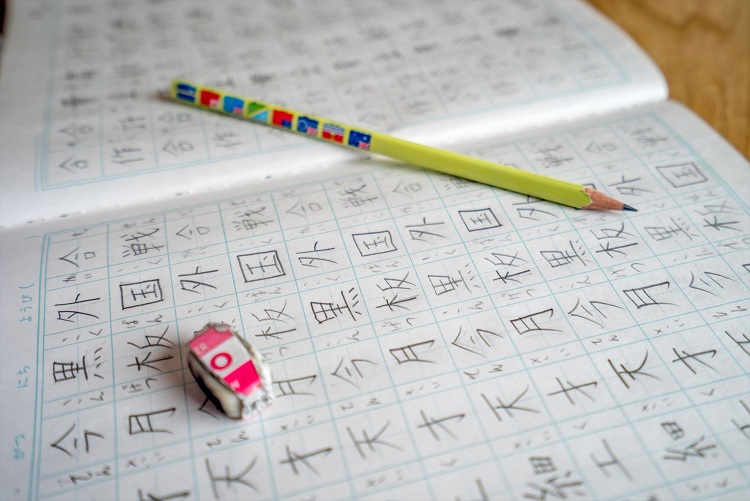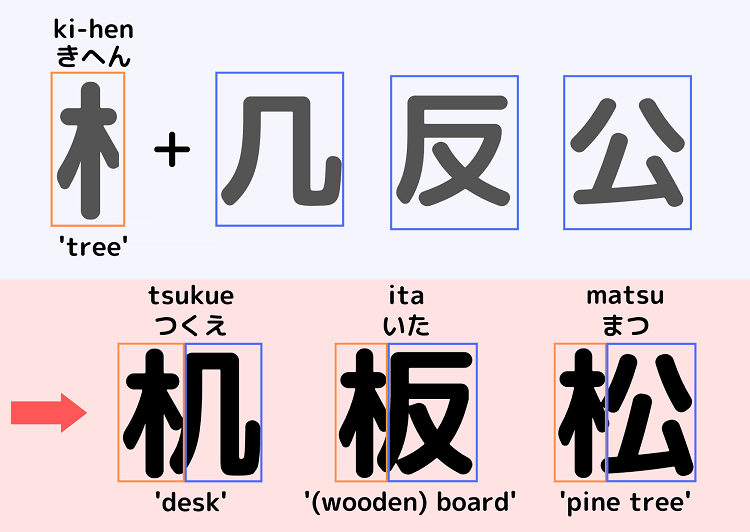+81-3-5990-5540
Message usJapan Blog
Sep 3, 2021
How students in Japanese elementary school learn kanji

Kanji can be one of the biggest challenges in learning Japanese and preparing for exams. It is said that you need to learn at least 80 kanji to prepare for the JLPT N5 level test alone.
Doesn’t that make you wonder, ‘How do children in Japan learn kanji?’
Even if you are surrounded by kanji every day when you live in Japan, it is important to learn how to read, write and use those kanji. Once you have mastered the most frequently used kanji, you’ll be able to make inferences on the pronunciation or meanings of the kanji that you didn’t know.
In this article, you will learn
- The basic method for learning and practicing kanji in your spare time
- What to look out for when you’re practicing kanji
Basic methods — learn it from writing!
In Japanese elementary schools, students learn kanji by what may be called the ‘repetition method’. Many school children have kanji practice as homework, and many students buy notebooks called 漢字練習帳 (かんじれんしゅうちょう, kanjirenshūcho) just for kanji practice!
The biggest characteristic of this 漢字練習帳 is that they have gridded sheets that help you write neatly. In a typical 漢字練習帳 you will find a square that is broken into 4 parts, which act as a visual guide.
Kanji are interesting in that they can often be broken into parts with designated meanings. The main part (which may be considered as the ‘category’ of the kanji) is often called へん (hen), and the other part is called つくり (tsukuri) which complements the meaning of the へん or the 部首 (bushu), a larger category that includes various types of kanji parts. If you are eager to learn more about this, I recommend you use a kanji dictionary. They have a special index that categorizes kanji according to their 部首 (bushu), so you can look up kanji that are related to each other very easily.

If you’ve got your 漢字練習帳 and decided what kanji you want to memorize, start writing them down! I personally recommend practicing each kanji 10 – 15 times.
Then, look at some example sentences using that kanji to learn some Japanese grammar at the same time!
For those of you who don’t have gridded paper, here is a PDF that you can print out and use!
Details to look out for in order to make learning kanji easier
-
1The strokes
In the Chinese cultural sphere, people in the ancient times used brush and ink to write. This means that the details of the kanji are related to the brushstrokes. The most important details are: 止め (とめ, tome, meaning ‘stop’), はね (hane, meaning ‘upward brushstroke’) and はらい (harai, sweep).
-
2Where do the lines connect?
Kanjis can be very difficult in that the details can make a big difference. For example, let’s look at these kanji: 已, 己, and 巳. Do the lines stick out or do they connect with a different stroke? These details are what distinguishes one kanji from another. Just like the alphabet letters ‘n’ and ‘h’ or ‘i’, ‘l’ and ‘t’ can be confusing when you don’t write them neatly, it is best to look into the details to make sure you’re writing the correct kanji!
What kanji should I learn?
There are more than 2,000 kanji that are used in Japanese daily life. It’s almost impossible to learn them at once, so it is important to choose what kanjis to prioritize!
If you are a beginner, learning JLPT N5 and N4-level kanji would be a good start. You can learn a lot of basic conversational Japanese vocabulary and expressions on the way! There are around 300 kanji to learn for the JLPT N5 and N4 tests, so these would give you an idea of how to learn and practice kanji.
Learn kanji and Japanese vocabulary, and get a head start in studying or working in Japan!
Kanji are an essential part of the Japanese language. Learning them may be hard and require determination, but learning how to read and write kanji and getting to know their meanings will make it easier for you to learn new Japanese vocabulary!
If you are planning on studying in Japan for university or working in Japan, having a certification in Japanese (JLPT N2 or above) would be a requirement, or would enhance your application.
Contact us if you are interested in preparing for university or work in Japan!
